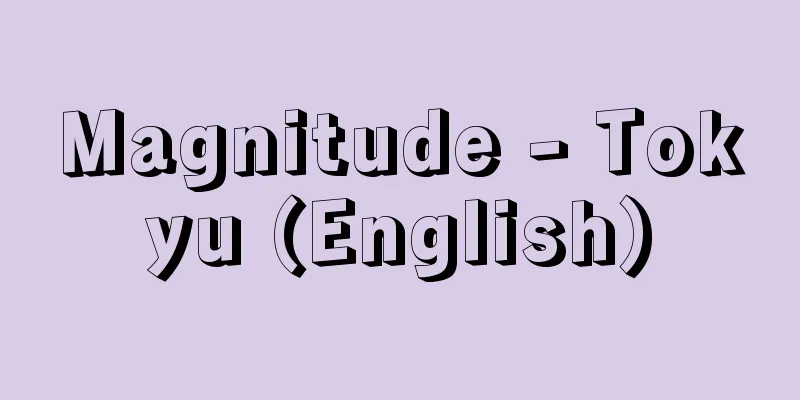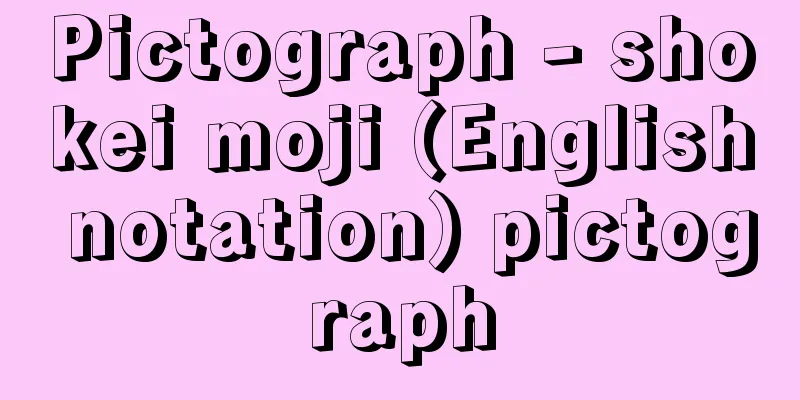Kango - Kango

|
A travel document that the Ming Dynasty of China required official tribute ships to carry when communicating with other countries. After the Edo period, it was also called a kangofu, but records from that time simply refer to it as a kango. It was issued by the Ming government to crack down on pirates and wakou (Japanese pirates) and to prohibit private trade, and was first issued to Siam, Champa, and Zhenla in 1383. It was brought to Japan by Ming envoys who visited in 1404 (Oei 11). A kango is a kind of matching card, and between Japan and China, 100 kango were made by dividing the two characters of the country's name, "Japan," and numbering the Japanese character and the original character from number 1 to number 100 for each. At the same time, 2 Japanese character kango bottom books and 2 original character kango bottom books were also made as original books to inspect them. Of these, 100 original kango and one Japanese kango bottom register were issued to Japan, and the rest were left in the Ming. Each ship sent to Ming brought its original kango with it when it arrived in Ming, and was inspected in Ningbo and Beijing where it was checked against the bottom register. Conversely, Ming ships were required to carry Japanese kango when they arrived in Japan. Based on the record "Bo Zi Entering Ming Records," it is believed that the left half of the paper stamped with "original kango" from the center of the characters was used as the kango, and the right half was bound into the bottom register. The kango was approximately 82 cm long and 36 cm wide. It was issued with each successive Ming emperor, and the old kango was returned to the Ming. [Yuko Ikegami] "Tanaka Takeo, Foreign Relations and Cultural Exchange" (1982, Shibunkaku Publishing) [Reference item] | |Source: Shogakukan Encyclopedia Nipponica About Encyclopedia Nipponica Information | Legend |
|
中国、明(みん)が諸外国との通交において、正式の朝貢船に所持を義務づけた渡航証明書。江戸時代以降、勘合符ともよんだが、当時の記録には単に「勘合」とのみ記されている。明政府が海賊や倭寇(わこう)を取り締まり、私貿易を禁止するために発行したもので、1383年に暹羅(シャム)、占城(チャンパ)、真臘(カンボジア)に交付したのが最初。日本には1404年(応永11)に来日した明使によってもたらされた。勘合は一種の合わせ札で、日本との間では、国名「日本」の2字を分け、日字と本字についてそれぞれ一号から百号まで番号を付した各100道(100通)の勘合がつくられた。同時に、それを検査するための原簿として日字号勘合底簿2扇、本字号勘合底簿2扇もつくられた。このうち本字号勘合100道と日字号勘合底簿1扇が日本に交付され、その他は明に置かれた。遣明船は1船ごとに本字号勘合をもって入明し、寧波(ニンポー)と北京(ペキン)で底簿と照合されて検査を受けた。逆に明船は日字号勘合を携帯して来日する定めであった。『戊子入明記(ぼしにゅうみんき)』という記録より推定すれば、「本字壹號」と印した紙の、文字の中央から左半分を勘合とし、右半分を底簿に綴(つづ)ったものとみられる。勘合の大きさは縦約82センチメートル、横約36センチメートル。明皇帝の代替りごとに発行され、旧勘合は明に返された。 [池上裕子] 『田中健夫著『対外関係と文化交流』(1982・思文閣出版)』 [参照項目] | |出典 小学館 日本大百科全書(ニッポニカ)日本大百科全書(ニッポニカ)について 情報 | 凡例 |
>>: Practice - Kankou (English spelling) practice
Recommend
Ise Shinkuro
→Hojo Soun Source : Heibonsha Encyclopedia About M...
Genkomon
A Chinese Jin literati. His pen name was Yushi an...
Entebbe - Entebbe (English spelling)
A city in south-central Uganda, east Africa. It f...
Nariwa [town] - Nariwa
An old town in Kawakami District, western Okayama ...
《Eisagoge》 - Eisagoge
…More than being an original thinker, he was the ...
Bath additives - Yokuyozai
These are non-medicinal products and medicines use...
Basilisk (English spelling)
An imaginary monster that lives in the desert. Als...
Bem, J.
…It was during this period that a large number of...
Akimoto Power Plant - Akimoto Power Plant
...Dam construction since 1916 has raised the lak...
Jewett, FF
…Born in Ohio. While studying at Oberlin College,...
Arne Blanc-type Armor - Arne Blanc-type Armor
…the general term for armor and helmets worn by w...
Shulgi
...Later, his son (or brother) Ur-Nammu gained in...
Council of Legal Education
...Anyone who wants to become a barrister must be...
Miyayama Kofun
There are ancient tombs called Miyayama in various...
Via Salaria (English)
…(9) Via Clodia: A road stretching north from Rom...









